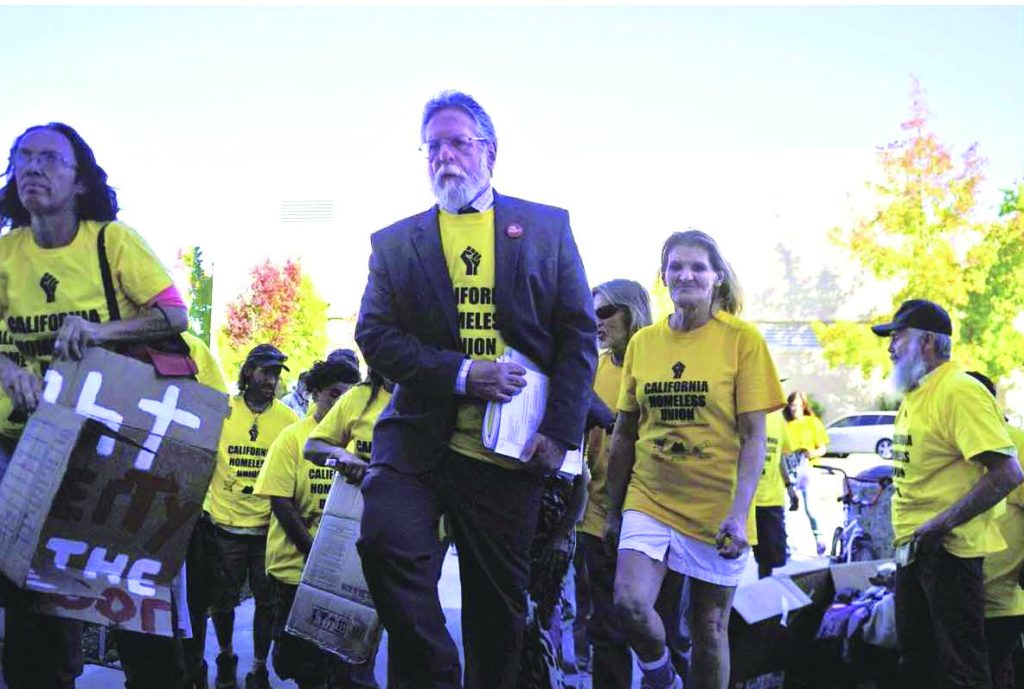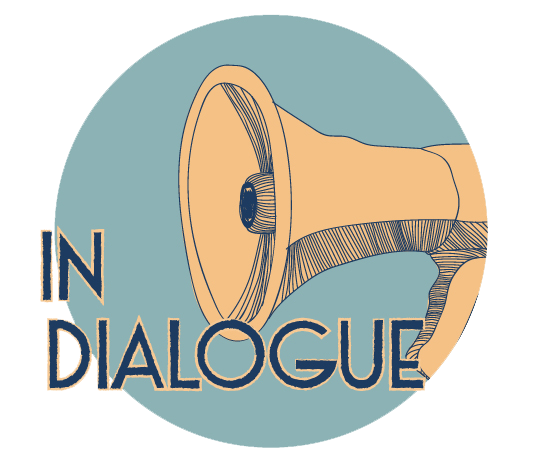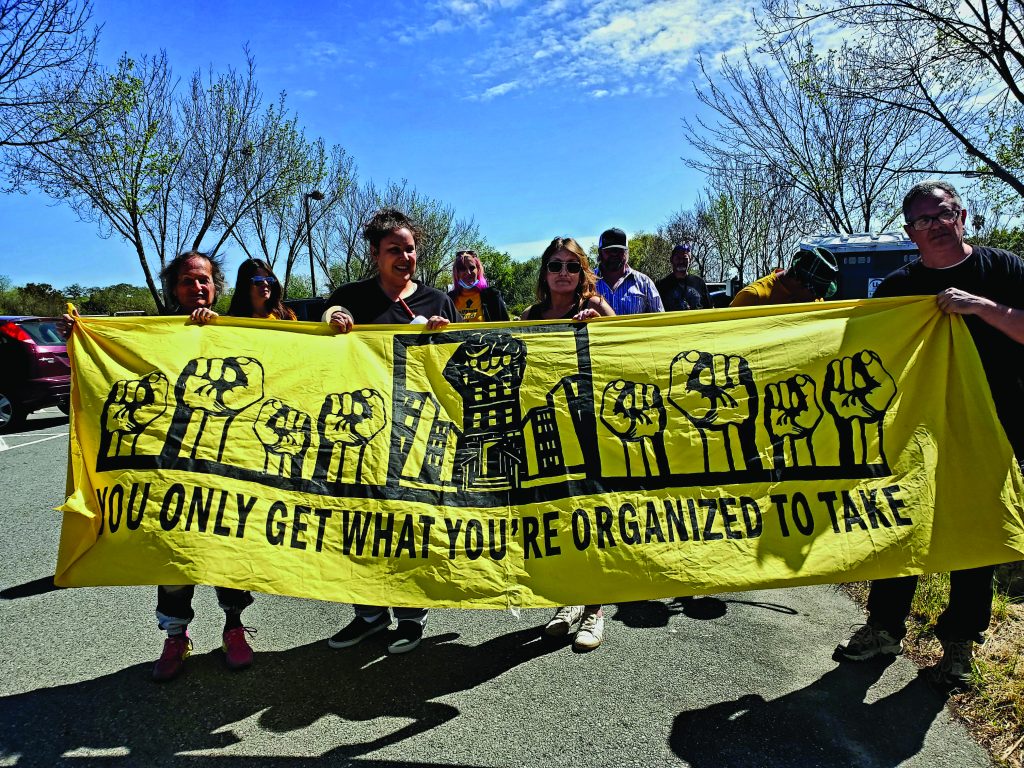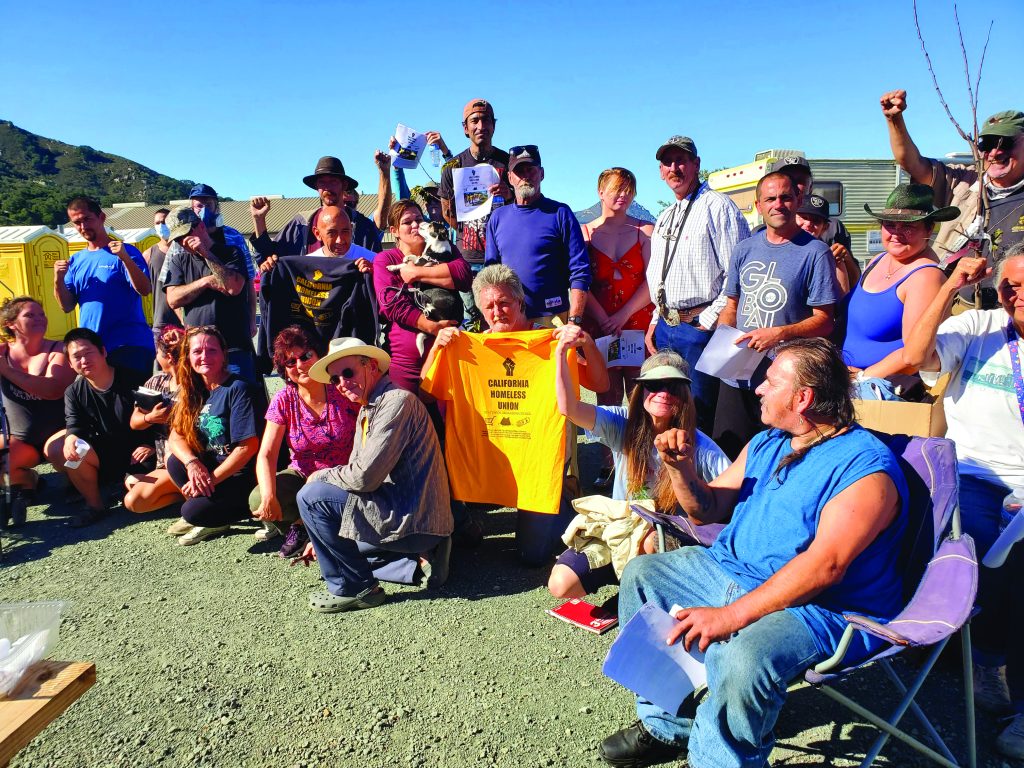

The National Union of the Homeless has always had big plans: to organize poor and homeless people into a powerful political force that can eliminate poverty and secure housing for all.It first formed in the late 1980s and early 1990s in response to what felt like a sudden boom of mass homelessness of families and former workers across our country, after the rapid deindustrialization of US cities left many on the street. From homeless shelters, encampments, and abandoned buildings, the National Union of the Homeless brought people together to speak out and fight against the conditions that made them homeless. Their organizing has secured pivotal rights for homeless people, such as the right to vote without a fixed address. And, they say, these historic wins are just the tip of the iceberg.
Anthony Prince is the Lead Organizer and General Council for National Union of the Homeless and California Homeless Union, as well as all of the Homeless Union locals. Formerly a member of a steelworkers union in Chicago, he is a founding member of the National Union of the Homeless. In honor of May Day, we caught up with Prince to learn more about the history of homeless organizing in the US, and what lies ahead. Our conversation has been edited for length.
Street Spirit: When was the National Union of the Homeless founded, and why?
Anthony Prince: The original union was formed in the early 1990s. It arose out of what appeared to be homelessness bursting upon the scene out of nowhere—that was the perception, that all of a sudden in places like Philly, New York, Oakland, and Chicago, you saw homeless encampments, people living on the sidewalks in cardboard boxes or sleeping in their cars. Our union was born out of the struggles that took place as homeless shelters were created and encampments grew. We were particularly active in New York around Tompkins Square Park and in Philadelphia in Kensington—a poor working-class neighborhood.
The National Union arose, formed by people who had experience in the traditional workplace-based union movement. We had electrical workers and former steelworkers. Many of them individually became homeless as a result of the deindustrialization of cities like Chicago, Los Angeles, Detroit, and Milwaukee. There had been a rapid and dramatic shift from a more mechanical-based industry to an increasingly electronic industry, which replaced our labor. A series of economic shocks resulted in people being permanently unable to find traditional employment. Almost overnight, people could no longer hold onto traditional housing.
The union grew out of the […] the survival struggles in encampments as the police and cities tried to disband them. It arose […] as cities started opening up mass congregate shelters, where people were being mistreated, where conditions were in some cases uninhabitable. Shelters were dangerous places to be, warehousing homeless people. Leaders would emerge saying, “We’re not being treated right. They are imposing religious mandates and not meeting people’s needs.” That’s where the National Union of the Homeless was born, out of these fights.
SS: What were the original goals or demands?
AP: The goal of the union, then and now, is “housing now.” […] We are for housing for all people as […] a constitutionally recognizable right. We are for the elimination of the poverty from which homelessness is a part. We believe that the resources, technology, and wherewithal exists to house every person in the United States. That’s our objective, to end homelessness, not just to improve the conditions of homeless people—although we do fight on a day-to-day basis to protect the immediate interests of homeless people, to protest against laws that criminalize homeless people, and for immediate survival demands. We say no more death in the streets.

SS: Can you tell me about some of the historical accomplishments you all have made? In what ways has your organizing changed policy or history for poor and homeless people?
AP: First of all, The National Union of the Homeless was instrumental in getting the right to vote for persons who did not have what they called a “fixed, stable address.” It used to be that if you could not provide evidence of a fixed, stable address, your right to vote was denied. We changed all that through practical struggles, particularly in Chicago with the Gary, Indiana Union of the Homeless. We went to court and won a major federal lawsuit such that even without a fixed stable address, a homeless person can walk into any precinct and vote just with a brief description of where they are living and minimal identification. […] Now in all 50 states including California, there’s a box that allows you to provide a description of where you are: the corner of this street and that street, a park, etc. That’s sufficient information to have the right to vote.
SS: What was the significance of forming a union of unhoused people and acting collectively?
AP: It was an accomplishment because at that time and still today, advocates are a big component in the overall housing conversation in the U.S.—that is, those who took a charitable approach to the unhoused. In most cases, this charitable approach was disempowering. Everyone could weigh in on policy except for homeless people themselves.
Our principal accomplishment with the original union was to break that, to allow the homeless to speak up about their own interests and lead their own fight. At the height of the original union, we had about 35,000 members. It was a rank-and-file union in the sense that it was built from the ground up. The leadership at the local and national level were people who were actually homeless. We also welcomed people who understood the fight for housing as a part of the broader fight against poverty. But 90 percent were homeless. Nothing like that had ever been created in the U.S. before.
SS: The union also organized the takeovers of empty homes in 1990, right?
AP: Because of the Savings and Loan crisis properties were foreclosed upon and left empty and under HUD jurisdiction. We had a major confrontation in 1989 and decided to force HUD Secretary Jack Kemp to set aside [10 percent of] empty HUD homes for the homeless. We had a huge march in October 1989—[tens of thousands of] people marched as a part of the broader march for housing. A smaller contingent of that group actually went to the HUD offices and confronted Kemp with these demands, and he agreed to them. Unfortunately, he did not keep his agreement. So in our view, we’re just going to go ahead and take them ourselves. We organized a three-year period of housing takeovers, which took different forms in different cities. The most intense takeovers occurred on May 1, 1990 when we organized a coordinated series over a period of a few days in Minnesota, New York, Oakland, and Chicago, where we made our way into these boarded-up public properties, public housing, or individual homes taken over by the government and sitting empty, and we moved homeless people into them. It wasn’t so much that we housed a great number of people, but it was emblematic of the crisis and the determination of the homeless to be housed.
SS: After that, the National Union of the Homeless dwindled, before being re-established in 2019. What were some of the struggles of that early movement? How did you re-form?
AP: Even though we did achieve some real success in terms of recognition, credibility, numbers, and our ability to actually influence housing policy, the union did go into decline because we didn’t sufficiently appreciate the need to have homeless union leaders who were trained, who were clear on the sources and economic roots of homelessness, and who knew how to build a durable movement. […] We have now remedied that with our Officers Training School, where our union officers take courses in [organizing] and study historical movements of poor people and how they were able to influence history. But we weren’t doing that in the beginning.
Another reason the union went into decline was the crack epidemic. It came on with such sudden and destructive force. A lot of our members and leadership fell prey to this epidemic. Now we know—based in part because of the reporting of Gary Webb, who wrote about the connection between the Iran-Contra Affair and the crack epidemic—that crack was used to control poor people who were a threat to economic and political order. But we were not prepared for it. I would put crack on the scale of COVID-19 in terms of death and disruption to the population. It was chemical warfare.
A core of us continued to organize in various ways through different organizations for decades. Then in 2014 here in Salinas, California, we began reestablishing the union and focused on California. We were able to establish local unions throughout the state. In 2019 we met in Washington, D.C., hosted by the Poor People’s Campaign and Reverend William Barber and Reverend Dr. Liz Theoharis. We had the space to officially reestablish the National Union of the Homeless.

SS: How many chapters are there now?
AP: We currently have [around] 25-26 local unions in California. There are also locals in New York City, Houston, Mobile, Alabama, Illinois, Massachusetts, and Pennsylvania, and we function in different ways in different places. Our largest chapter is in Sacramento, where we have 2,700 members out of an estimated 11,000 homeless people in the county. We represent over 20 percent of homeless people in the county and have officers from all the major encampments.
SS: What is the National Union of the Homeless doing now? Can you talk about some of your recent organizing successes?
AP: In Salinas, we were able to get an ordinance repealed that would have empowered the police to seize and immediately destroy any item of personal property that was “broken, dirty or disrepaired”—that was the language they used. We were able to force them to amend that ordinance and replace it with a slightly better ordinance.
Since then we’ve gotten many temporary restraining orders and injunctions to stop the destruction of some of the largest encampments in Santa Cruz, Novato, Sacramento, Salinas, and Sausalito. We were able to bring the leaders that were emerging out of these large encampments, organize the leadership of homeless encampments into the union, and file motions in courts to stop cities from destroying these encampments for extended periods, especially during COVID-19, which cities were doing in violation of CDC guidelines.
We also have had victories in Marin County, one of the wealthiest counties in California. We organized the county’s largest shelter, which is called the New Beginning Center (NBC), and has a capacity of 80 people. We established a local union there in September 2021. They had a policy in place for 20 years of charging each person a $275 per month “program fee.” They were mandatory fees—the only exception was if you were on public aid, which brought it down to about $210. This is a big amount of money to charge homeless people. People had jobs, but low-paying jobs, and were homeless.
The union, which was called NBC Local 5, went on strike and refused to pay the mandatory program fee. The director falsely told the press that the fee was never mandatory, and that they had never kicked anyone for not paying the fee. Once he made that comment, our strike expanded, because the director said you aren’t required to pay these fees, so we said we’re not going to. Three weeks after the strike, they cut the fee from their program.
We have also preserved big encampments in Santa Cruz and Sausalito.
SS: What are your goals for the future?
AP: Our immediate goal is housing for all and the end to the deaths of homeless people on the street, especially in the midst of extreme climate conditions which are making matters worse. End homelessness, and make the systemic changes necessary to do that.
For the union, we will be launching an organizing drive very soon and having a statewide organizing convention. […] It will be the first ever statewide convention of homeless people, bringing in leaders from around the state from all kinds of places—encampments, motels, students at schools, people in vehicles.
Our aim is to become a political factor in the state on behalf of not just homeless, but poor people. No organization that we are aware of in California is actually creating a voice for homeless people. We’re talking about something you can compare to the workplace union of the 1930s and 1940s, the widespread organizing that shook everything up and empowered industrial workers. We’re looking to empower poor and homeless people in the same way.
SS: Where do you think the fight goes from here?
AP: We want to change the narrative. We’re showing that homeless people are not helpless, they are capable of organizing and flexing their own muscles—and that people are not homeless because of bad decision making.
Nobody is safe from becoming homeless. So many of us are one paycheck, one fire, one natural disaster, or one eviction away from the streets. Eight million people in California are considered low-wealth, who are at or below the poverty line. That’s a lot of people. There’s no reason we should not be organized as a powerful political force.
In Dialogue is a column in which Street Spirit speaks with community leaders.
Alastair Boone is the Co-Editor in Chief of Street Spirit.
